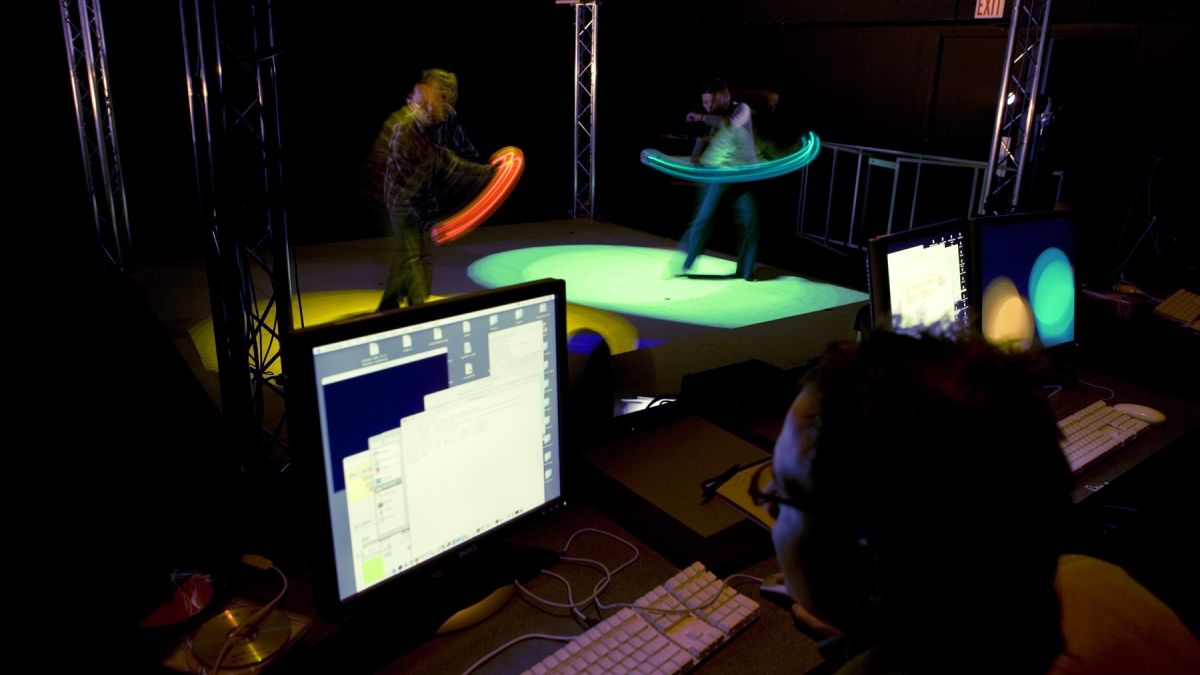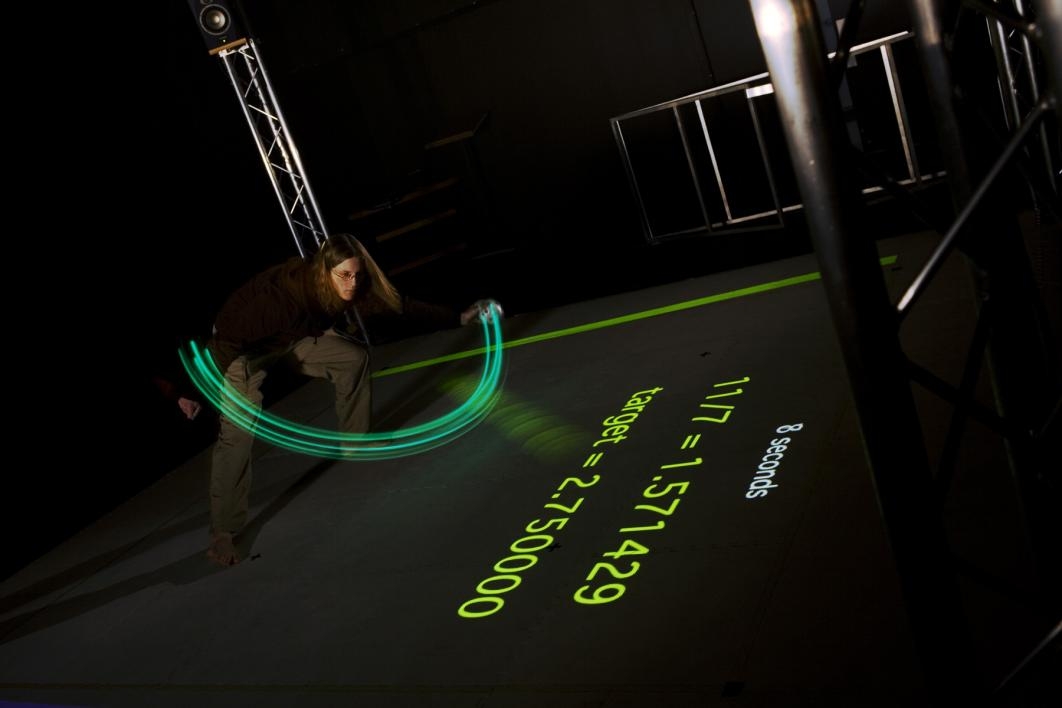K-12 students fuse technology and art in ASU's SMALLab

Arts, Media and Engineering SMALLab.
Photo credit: Ken Howie.
Photo courtesy of Herberger Institute for Design and the Arts
TEMPE, Ariz. – Since the time of Leonardo da Vinci, the arts and sciences have fused to create new understandings of the world around us.
To keep pace with the rapid technological advances of modern society and prepare students for the future, K-12 educators must harness emerging technologies, enable collaborative learning, and bridge the physical/digital realms.
Researchers in ASU’s Arts, Media and Engineering (AME) Program are addressing students’ diverse learning styles and engaging their creativity and curiosity in an interactive, life-sized multimedia learning environment called SMALLab.
“SMALLab integrates recent advances in expressive computing interfaces, digital gaming, and leading edge educational technologies,” says David Birchfield, assistant professor. “Students interact with sonic and visual media through full body 3-D movements and vocalizations to explore complex concepts drawn from the arts and sciences.”
SMALLab invites participants to become the central characters, collaborating and learning together on a digital stage.
SMALLab’s most recent experiment is with high school students from the Phoenix Metropolitan Arts Institute.Connectivity Stage 1, Interlab, is a collaborative project between the ASU Art Museum and the AME program.
Using AME’s SMALLab technology and inspiration from the museum’s art collection, students bring contemporary relevance to historical works of art through an interactive digital environment on exhibit at the museum from April 14 – Sept. 29, 2007. Visitors can contemplate the original artworks while physically experiencing the students’ interpretations through interactive video, 3-D graphics, audio and gesture. Visitors’ behavior on the installation “stage” affects the resulting media responses they experience.
“The Arts, Media and Engineering SMALLab project is a perfect example of the progressive work that characterizes the Herberger College of the Arts,” says Kwang-Wu Kim, dean of the Herberger College. “It connects community, technology and diverse expertise to create artistic experiences that are inclusive and adaptive.”
The collaboration between AME and the ASU Art Museum has been a long-time vision between ASU Art Museum director Marilyn Zeitlin and AME director Thanassis Rikakis.
“This project exemplifies priorities of the museum as it goes forward,” says Zeitlin. “It invites the audience to take center stage, to interact with the work, to be the work. It makes creativity and spontaneity central to what we show. And it uses technology to be playful – acknowledging its ubiquity in our lives.”
Workshops and educational activities for teens are scheduled throughout the run of the exhibition. Birchfield also will teach an “Interactive Gaming Intensive” workshop through ASU’s Herberger College for Kids. The workshop runs June 4-15 and 18-29. Registration is open now.
Connectivity Stage 1, Interlab, is made possible in part through generous funding received from the Phoenix Youth and Education Commission’s “Focus on Results” youth grant, the Arizona Commission on the Arts, Arizona American Masterpieces, and the National Endowment for the Arts American Masterpieces Program. Participants include AME faculty member David Birchfield and research assistants Chris Todd, Aaron Cuthbertson, Sarah Hatton and Brandon Mechtley; Metropolitan Arts Institute photography instructor Aaron Abbott and high school students; and ASU Art Museum education coordinator Laura Stewart and Windgate curatorial intern Andrea Feller.
Founded in 1964, Herberger College of the Arts comprises four nationally ranked academic units: School of Music, School of Art, Department of Dance and School of Theatre and Film, plus the Arts, Media and Engineering Program and the ASU Art Museum. Nearly 2,600 students attend the college, which has 170 faculty and 150 staff. Since 2004, 25 National Merit Scholars and 13 National Hispanic Scholars have chosen the Herberger College as their place of study. To learn more about the college, visit www.herbergercollege.asu.edu.
Media Contact:
Laura Toussaint
480.965.8796
laura.toussaint@asu.edu
